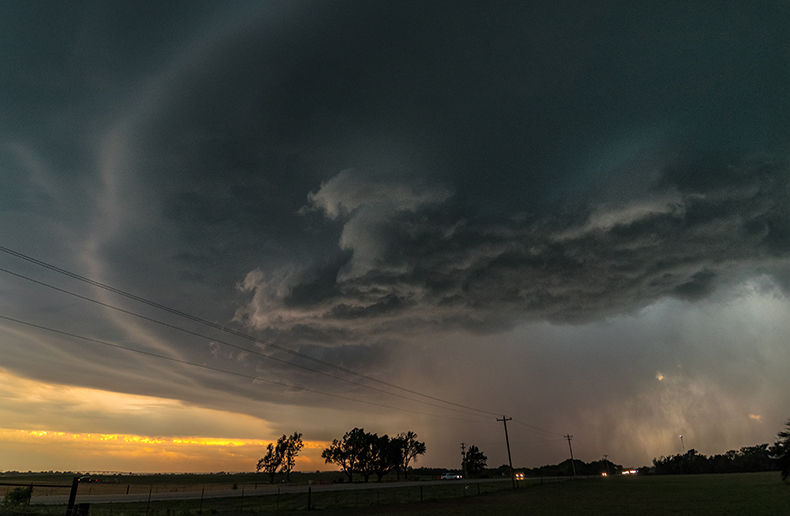Exchange traded fund based mutual fund products are gaining popularity with advisors and selection is broadening.
Traded as shares, exchange traded funds (ETFs) track the return of an index, and can sometimes be used in active investment strategies. The Toronto Stock Exchange (TSX) defines them as a single stock that represents a basket of underlying securities. This basket may be made up of shares, bonds, or other assets such as commodities.
The catch is that mutual fund licensed advisors cannot sell individual shares. Only those who hold a full securities licences enjoy that privilege. Faced with the growing popularity of exchange traded funds, product manufacturers have decided to find a way around this obstacle. They have bundled ETFs into mutual fund wrapper.
The two biggest players in this market are Invesco Trimark which launched its Powershares line in 2009 and BMO Guardian Funds which introduced its offering in 2010.
Invesco Trimark has quickly gained market share. As of Dec. 31, 2010, the company had $958 million in assets under management in its PowerShares ETF mutual funds. The FTSE RAFI Canadian Fundamental Index Class Fund alone attracted $165 million, making it the largest in the lineup. Last September, Invesco Trimark expanded its offering with another three PowerShares mutual funds, namely the Tactical Bond Fund, Tactical Bond Capital Yield Class, and the Tactical Canadian Asset Allocation Fund. These three funds have already gathered $43.5 million in assets.
Invesco Trimark also revamped its old products. In the fall, it converted its traditional portfolios into nine Intactive portfolios. These new Intactive funds combine ETFs with active management. “Intactive is an evolution. PowerShares was phase one and Intactive is phase two,” explains Oricia Smith, vice president of product development at Invesco Trimark. “It focuses on how you ultimately build a portfolio with better risk-adjusted returns, to deal with different market cycles. The five Intactive portfolios make tactical shifts over sector exposures, with active and passive funds side by side.”
For its part, BMO had gathered $75 million in assets under management as of Dec. 31, 2010. Like Invesco Trimark, it has built its ETF mutual funds using its own exchanged traded funds. BMO launched these underlying ETFs in 2010, shortly before the creation of the hybrid ETF mutual fund product.
Croft Financial Group, also offers ETFs through mutual funds, but uses a different model. It wraps third party ETFs into its Portfolio Index Evolution (PIE) mutual funds. The five PIE ETF mutual funds invest in a pool of up to 30 ETFs. For example, the Canadian equity fund allocates 40% of its holdings to the BlackRock’s iShares S&P/TSX60 ETF (XIU-T) and another to Claymore’s Canadian Fundamental Index ETF (CRQ-T). The remaining amount is spread between two other of BlackRock’s ETFs.
In 2008, it was Croft Financial that launched the first ETF mutual fund in Canada. By the end of 2010, this small, niche player had accumulated assets totalling $56 million. “It’s a good result considering our limited resources,” says Krystian Urbanski, vice president of business development at PIE Funds, who points out that his firm only uses two wholesalers. Launching in the midst of the financial crisis didn’t help much either, he adds.
Providers know that their ETF mutual funds will not enjoy the same high levels of growth that pure ETFs experienced over the last seven years. The total amount of assets held in exchange traded funds has surpassed the billion dollar mark. “The growth in ETF mutual funds will be more modest, especially in a mature industry like mutual funds,” says Leon Jackson, vice president of business development at BMO Guardian Funds.
Mr. Urbanski adds that it will always take time for advisors to get accustomed to new investment solutions. However, he believes that as ETF mutual funds gain recognition, there will be an increasing appetite for this kind of product amongst advisors and investors alike.
Mr. Urbanski also revealed that PIE Funds concluded an agreement with Canadian Western Trust last year for the distribution of its no-fee, self-directed RRSPs. Working in the same line of business as B2B Trust and MRS Trust, the Edmonton-based Canadian Western Bank Group subsidiary offers trust services to financial advisors.
In order to gain ground, ETF mutual funds must overcome the problem of cost. An investor can often purchase an ETF with a management fee of less than one percent. For example, BMO’s Dow Jones Canada Titans 60 ETF and Claymore’s Laddered Government Bond ETF each have management expenses of 0.16%. The costs of some aggressive funds can be higher. Claymore’s Broad Emerging Markets ETF has a management expense ratio (MER) of 0.7%. This fee increases to 1.45% for the advisor version of the fund, which offers a trailing commission. Considered to be highly speculative, the NYMEX Natural Gas Bull Plus offered by Horizons BetaPro has an MER of 1.14%. The Horizons BetaPro web site does not give a specific category for the fund.
But Invesco Trimark’s president and CEO Peter Intraligi does not think that ETF mutual funds are that much more expensive. Their MERs are still lower than traditional mutual funds, he notes. For example, Invesco’s Intactive portfolios have MERs that range from 0.75% to 1.75%. “Our research shows that our MERs are very competitive compared to similar ETFs,” he says.
Learning curve
In his opinion, there is room for both types of products in the industry. And to come into their own, ETF mutual funds need the Mutual Fund Dealers Association (MFDA) distribution network. Mr. Intraligi suggests that mutual fund advisors are still facing a learning curve when it comes to exchange traded funds. “Because most of the MFDA channel advisors only have their mutual fund license, they couldn’t sell ETFs. Now they can.” As advisors start to integrate them into their practices, ETF mutual funds will move from being niche products to complementary products. “Adoption will continue as advisors are learning,” he comments.
The network of Investment Industry Regulatory Organization of Canada (IIROC) brokers who hold their full securities licenses is also important to Invesco Trimark. Mr. Intraligi believes that the mutual fund advisors and stock brokers account for equal shares of ETF mutual fund assets under management. “Due to the effort of these channels, we achieved year end 2010 assets [that were] two to three times what we were expecting. Fifty per cent of these assets came from each of the two channels,” he says.
Mr. Intraligi also points out that, on average, the account size of a client who holds PowerShares is twice that of a traditional mutual fund client. For the F Series funds, aimed at fee-based accounts, the average account size is four to five times higher. As for the size of the average PowerShares sale, it is 20 to 30 times higher than the typical mutual fund sale. “We see that advisors are using ETF funds for the higher net worth type of clients,” he says.
Alain Desbiens is a regional vice president of sales at BMO, and he believes that many investors would rather buy an ETF mutual fund with a 1.35% fee rather than a pure ETF. He compares the situation to someone who prefers to buy an ETF with a 0.15% fee rather than purchase each of underlying stocks separately.
“People do not have the knowledge or the time to buy stocks themselves. It’s a value added for a lot of investors to be able to put their portfolio on cruise control. It is an easy way to gain access to equities, and the rebalancing is done automatically,” comments Mr. Desbiens.
Mr. Jackson notes that the fees for BMO’s six ETF mutual fund portfolios range from 1.35% and 1.50%, which compares favourably with the MERs of traditional mutual funds. Guardian Funds uses BMO to distribute its funds, but it also offers the product through third party brokers and mutual fund dealers. Mr. Jackson hopes that BMO Guardian’s initiative will be supported by a more intensive publicity campaign. At the moment, he says most promotion is done by word of mouth between advisors.
At Croft’s PEI Funds, Mr. Urbanski is optimistic. “We see significant growth for 2011. One of the main benefits of PIE for advisors is that you can buy five funds instead of 25 ETFs,” he says. He also expects to see new players enter the market. “A lot of people may be tempted to jump into the mutual fund ETF sector. But the competition is fierce with players like Invesco and BMO. It’s hard to get into this market unless the new player has something unique to offer.”
Another feature of the PIE Fund lineup is its independence from the ETF manufacturer. “PowerShares mutual funds have Invesco PowerShares ETFs in them. BMO ETF funds, it’s still BMO ETFs. We’re not tied to a specific manufacturer. We can offer a multi-strategy approach.” When picking ETFs for its mutual funds, PIE says that it chooses the ones that are the best known and the most liquid.
PIE’s multi-strategy philosophy means that it uses ETFs that are based on market capitalization, such as BlackRock’s iShares, as well as ETFs that are based on other evaluation methods.
Selling ETF mutual funds also raises the eternal question of whether passive or active investment management is better. According to Mr. Urbanski, there is no doubt about the superiority of ETF’s passive indexing. Citing the Standard & Poor’s Indices Versus Active (SPIVA) report, he notes that only 1.1% of actively management Canadian equity funds have outperformed the S&P/TSX Composite Index over the last five years.
Often considered to be the best strategy for more speculative markets, active management did not do much better in foreign equities. According to the SPIVA report, only 9% of American equity funds and 12.1% of international equity funds beat their underlying index. Global funds did slightly better, beating the index 20.5% of the time.
Tax Planning
According to the BMO web site, tax planning is another reason why investors should consider buying ETF mutual funds. ETFs are tax efficient because they tend to have very little portfolio turnover, and therefore generate fewer capital gains and losses than other investment products. They are diversified, liquid, flexible, and transparent.
Most ETF mutual funds are set up as corporations. Thanks to this corporate structure, an investor can transfer from one fund to another within the same family without triggering a taxable capital gain. The investor will only pay taxes on the gains when he or she withdraws the funds.
Some fund categories also offer regular monthly payments. “As of November 29, 2010, we have added a T6 option to all of our BMO Guardian ETF funds. Each product offers a fixed annual withdrawal of 6%, paid monthly,” says Mr. Jackson.






